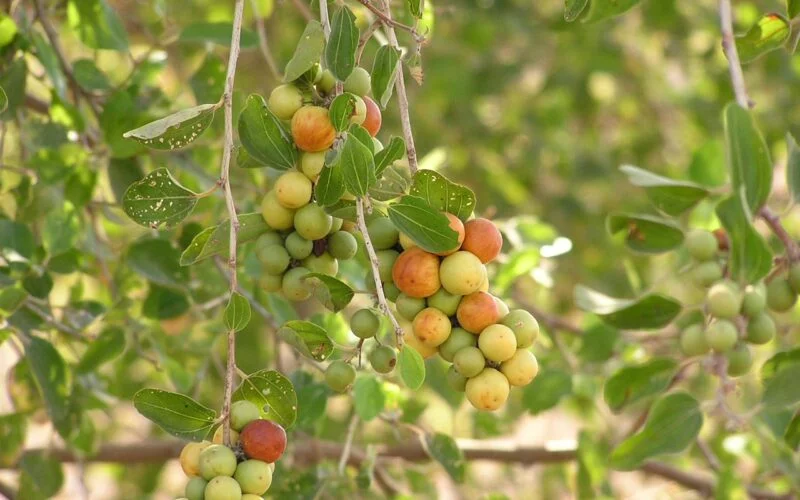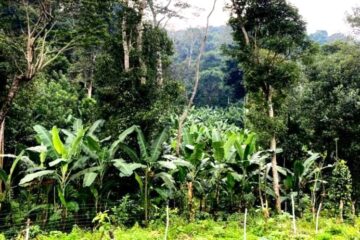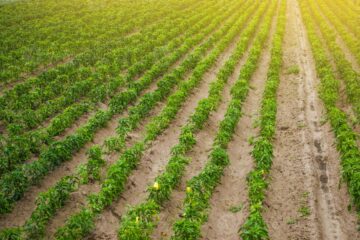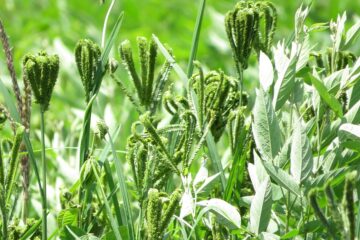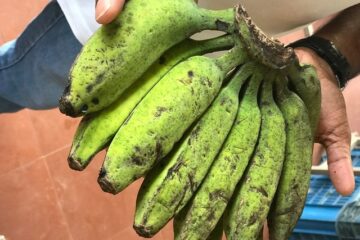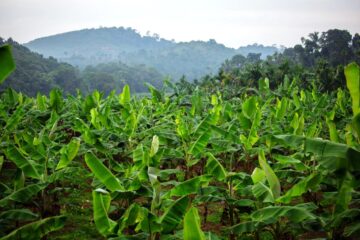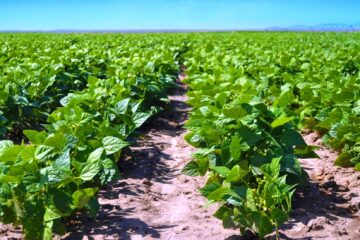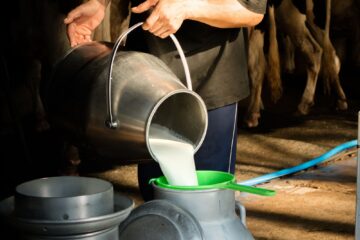Prosopis Juliflora (Seemai Ilanthai) is widely used in Ayurvedic medicine. Each 100 grams of fruit contains 5.66 grams of starch, 0.34 grams of protein, 0.06 grams of fat, 30.6 mg of potassium, 6.0 mg of calcium, 3.0 mg of magnesium, 6 mg of phosphorus, 0.13 mg of iron, 19.3 mg of vitamin C, 0.01 mg of zinc, 0.3 mg of niacin, and 22 kilocalories of energy.
Varieties
Popular Varieties:
- Banarasi
- Umran
- Gola
- Kaithili
- Goma Kirti
Kaithili:
- Features straight, almost invisible thorns on the stem.
- Small, egg-shaped leaves with serrated edges.
- Egg-shaped fruits with a length of 3.37 cm, width of 1.9 cm, and weight of 6.22 grams.
Umran:
- Medium-sized trees with branches that touch the ground, forming a bushy structure.
- Curved thorns and oval leaves with serrated edges.
- Oval fruits with a length of 4.2 cm and width of 3.2 cm.
Gola:
- Trees have a sprawling structure.
- Flattened fruits with a pointed tip, shiny yellow skin.
- Yields 100-120 kg of fruit per tree annually.
Banarasi:
- Intermediate variety, trees grow 8-12 meters tall.
- Round or elongated fruits with a narrow tip.
- Suitable for Tamil Nadu, yields 100-110 kg of fruit per tree annually.
Soil
Seemai Ilanthai grows well in loamy and sandy soils, including saline and drought-prone areas. Suitable soil pH ranges from 5 to 9.
Climate
Grows well in tropical and arid regions. In extreme heat and drought, it sheds leaves and enters dormancy.
Propagation
Propagation is done using bud-grafted seedlings.
Planting Method
Plant with an 8-meter spacing between rows and plants. Dig 1-meter deep and wide pits, fill with well-rotted farmyard manure and topsoil, and water thoroughly. Plant 2-3 seeds per pit at a depth of 3 cm.
Fertilization
At planting, apply 20 kg of manure, 435 grams of urea, 625 grams of superphosphate, and 335 grams of potash per pit. In the second year, after pruning, apply 30 kg of manure, 1,085 grams of urea, 1,250 grams of superphosphate, and 830 grams of potash per pit.
Water Management
Young trees need weekly watering. Mature trees need less water but benefit from irrigation during fruiting for higher yields. Drip irrigation requires 7 liters of water per plant per week. Using black polyethylene mulch helps retain soil moisture and control weeds.
Pruning
Prune annually in February-March to encourage new branches and flowers. Remove diseased, weak, and improperly growing branches.
Integrated Pest Management
Fruit Fly: Collect and destroy affected fruits. Spray 2 ml of Monocrotophos or Dimethoate per liter of water.
Lac Insect: Prune affected branches and burn them. Spray 2 ml of Phosphamidon or Methyl Demeton per liter of water.
Leaf Spot Disease: Spray 1 gram of Carbendazim or Chlorothalonil per liter of water at 14-day intervals.
Powdery Mildew: Spray 2 grams of sulfur powder per liter of water.
Harvesting
Harvest begins a year after planting. Flowering starts in the third week of September and continues until late October. Fruits mature in 150-175 days. Harvest fruits in December-January, preferably in the evening. Each tree yields 70-80 kg annually and can produce for up to 20 years.
Post-Harvest Handling
Sort harvested fruits into large, medium, and small grades. Store at 10°C for up to three days or at 30°C and 85-90% humidity for 30-40 days.
Seed Production
Seeds mature 13 weeks after flowering and are harvested when the fruit turns yellow-red. Store seeds without treatment for up to 30 months.
Medicinal Benefits
Prosopis Juliflora is used in traditional medicine to promote restful sleep and regulate bowel movements due to its fiber and starch content. It enhances iron absorption, regulates blood flow, and aids weight loss.
A. Solaimali, P. Arthirani, P. Bhakyathu Salika, Agricultural Research Station, Kovilpatti – 628 501. K. Annasami, Pushkaram Agricultural College, Thiruvarangulam, Pudukkottai District.

